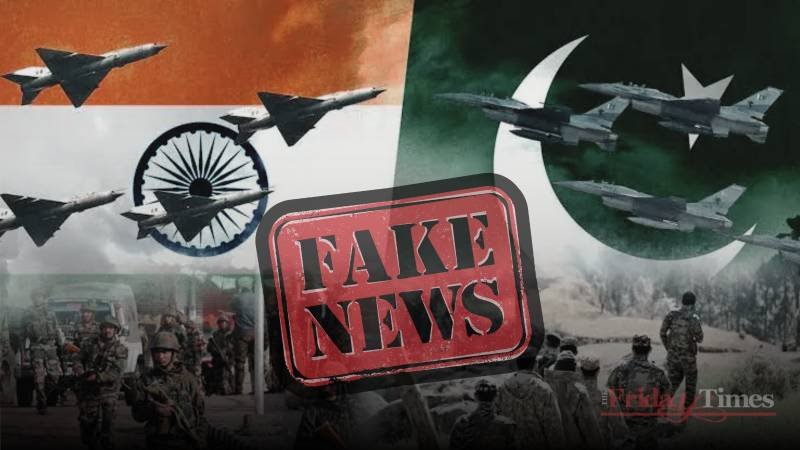India Accused Of Grey Zone Warfare As New Proxy Threats And Disinformation Target Pakistan
Nida Khattak
22 July 2025


India’s ambition to repeatedly entangle its neighbours in conflicts is rooted in its unrelenting drive to establish itself as the sole hegemon in the region. The so-called self-proclaimed ‘net-security provider’ has assumed the role of a regional bully to acquire what it thinks is its fair share of regional influence. That being said, although the recent Pakistan-India May 2025 conflict served as more of a reality check to this misguided Indian pursuit, it might not halt such misadventures from India in the future. On the contrary, now that India is confronted with the realities of its conventional capabilities, the nature of its offensive posturing has shifted to another domain, one that lies in the grey zone. This shift became especially apparent during the June 2025 Iran–Israel conflict, when India opportunistically amplified its information warfare against Pakistan, hijacking a global crisis to advance its regional narrative and subversive agenda.
Stung by recent setbacks in the conventional domain and keen to avoid future embarrassments, India has amplified its grey zone tactics by expanding its reliance on proxies and disinformation to destabilise Pakistan, meanwhile trying to preserve a plausible deniability. In this regard, India’s infamous disinfo labs have been actively conducting Psychological Operations (PsyOps) for years. One only needs to search for ‘nuclear’ and ‘Pakistan’ in any search engine, and one would be greeted with a plethora of articles pairing the country’s nuclear capability with terms such as ‘threat’ and ‘terrorism.’
The sudden emergence of a new faction, Tehrik-i-Taliban Kashmir (TTK), on 31 May 2025 highlights yet another front that India is trying to open. This is in addition to the surge in terrorist attacks that Pakistan witnessed in May 2025. There were 85 attacks in Balochistan, KPK, and Sindh combined, a 5 percent increase from the previous month. The emergence of the TTK is also not a coincidence. This group is openly condemning the Pahalgam attack in IIOJK, while also declaring Jihad in the AJK. Its sudden appearance, in parallel with India’s strategic ‘sub-threshold’ manoeuvres to create instability within Pakistan, raises questions about its timing and potential utility as a proxy in the broader strategic landscape.
However, an even more insidious strategy is India’s parallel effort to paint Pakistan as the source of the very instability that is of its own making. There lies a two-pronged approach, a duplicity which became especially visible during the Iran–Israel conflict in mid-June 2025. As the Iran–Israel war grabbed worldwide attention, India’s major media outlets published op-eds that aligned Pakistan with Iran in a “volatile nuclear region,” stating, “Pakistan poses a similar threat… mirrors Iran’s strategy.” Meanwhile, recycled columns on “radiation leak rumours” from May’s conflict in Pakistan reappeared on X and news platforms, fuelling fresh anxiety.
In addition, as Pakistan rightly raised alarm over the risk of cross-border spillover from groups like Jaish al-Adl exploiting the turmoil on its Iran frontier, Indian discourse advocacy circles and diplomatic outlets captured the moment to amplify them in a distorted way that recast Pakistan as the common denominator of regional chaos. India’s conspicuous silence on Israel’s strikes and its subtle efforts to draw moral equivalence between Pakistan and rogue actors served to hijack the global narrative.
This timing is not coincidental; it is a classic case of grey‑zone information warfare: India is using old disinformation to stir nuclear fears and twist the Iran–Israel crisis against Pakistan
For years, India has invested heavily in establishing media muscle and diplomatic lobbying to discredit Pakistan at global forums. India’s most recent aim, to hijack global anxiety over nuclear escalation in the Middle East to frame Pakistan as a destabilising actor, coupled with its effort to re-enlist Pakistan in the FATF grey list over an old misleading transaction in missile development, is a manifestation of how India is waging a narrative war. However, this time around, Pakistani diplomats are actively and swiftly countering the narrative as soon as it becomes apparent. From presenting Pakistan’s narrative on international forums, propagating principled condemnations of strikes on Iranian nuclear facilities, and media interventions actively pointing out false flags on social media, Pakistan is effectively correcting the record.
These two recent conflicts make it clear that war is now fought on multiple fronts, and defending the nation requires vigilance not only in the air or on the ground but also in the online domain, especially in the presence of rival powers. Hence, in the face of India’s miscalculated and jingoistic provocations on multiple fronts, Pakistan must stay the course, calibrated and resilient. Within this context, unbanning X was a prudent move, offering Pakistan a vital channel to project its truth and counter hostile narratives in real time. In the murky theatre of grey zone warfare, clarity of purpose will remain Pakistan’s greatest strength.

The Centre for Aerospace & Security Studies (CASS) was established in July 2021 to inform policymakers and the public about issues related to aerospace and security from an independent, non-partisan and future-centric analytical lens.

@2025 – All Right Reserved with CASS Lahore.